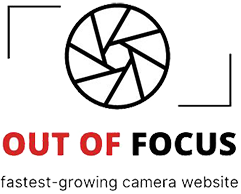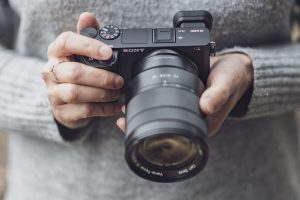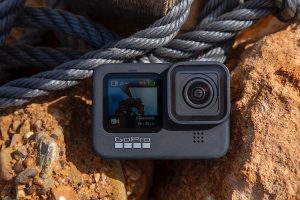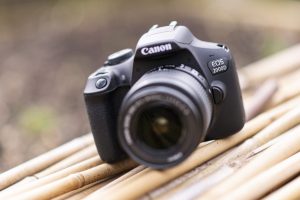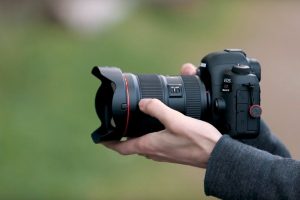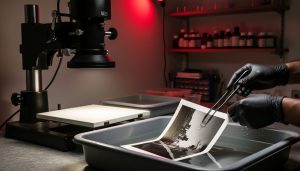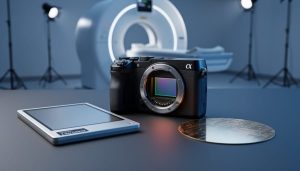
Transform your photography studio into an eco-conscious powerhouse by implementing sustainable practices that boost both environmental impact and profit margins. Leading studios are embracing innovative business models that prioritize sustainability without sacrificing quality or client satisfaction.
Switch to LED lighting systems to reduce energy consumption by up to 80% while producing professional-quality illumination for your shoots. Replace single-use props and backdrops with durable, reusable alternatives crafted from recycled materials. Implement a digital-first workflow that minimizes paper waste through electronic contracts, invoicing, and gallery delivery systems.
The photography industry’s environmental footprint extends beyond the studio walls, but forward-thinking businesses are proving that sustainability and profitability can coexist. From solar-powered studios to biodegradable packaging solutions, these practical changes not only reduce operational costs but also resonate with environmentally conscious clients willing to pay premium prices for green services.
This guide explores proven sustainable practices that deliver immediate business benefits while positioning your studio as a leader in environmental stewardship.
Digital-First Photography Workflows That Cut Waste

Cloud-Based Client Galleries
Cloud-based client galleries represent a significant step forward in the digital transformation in photography, offering an environmentally conscious solution for delivering images to clients. By eliminating the need for printed proofs and physical storage media, photographers can significantly reduce their environmental impact while improving client satisfaction.
Consider this: a typical wedding photography package once included multiple printed proof sets and CDs or USB drives. Today, these same images can be delivered through sophisticated online galleries, completely eliminating physical waste. Popular platforms like Pixieset, ShootProof, and CloudSpot not only provide secure image delivery but also offer features like client ordering and mobile accessibility.
The environmental benefits are substantial. A single wedding’s worth of printed proofs could use up to 100 sheets of photo paper, plastic sleeves, and packaging materials. Multiply this by dozens of clients per year, and the waste reduction becomes significant. Additionally, cloud-based systems reduce carbon emissions by eliminating the need for physical delivery or client travel to view and select images.
From a business perspective, online galleries also streamline workflows and reduce costs. Photographers save on printing supplies, packaging materials, and shipping fees while providing clients with instant access to their images from anywhere in the world. This modern approach aligns perfectly with today’s environmentally conscious consumers who increasingly prefer digital solutions.
Paperless Business Operations
In today’s digital age, transitioning to paperless operations isn’t just environmentally conscious—it’s smart business practice for photographers. By implementing digital solutions like studio management software, you can significantly reduce paper consumption while streamlining your workflow.
Start by digitizing your client contracts and model releases using electronic signature platforms like DocuSign or Adobe Sign. These tools not only save paper but also provide better document security and easier retrieval. Digital invoicing systems can automatically generate, send, and track payments, eliminating the need for printed bills and reducing payment processing time.
Cloud-based storage solutions offer secure ways to deliver client galleries, share mood boards, and store important documents. Instead of printing contact sheets or proof albums, utilize online gallery systems that allow clients to view and select their favorite images digitally.
For daily operations, switch to digital scheduling tools and customer relationship management systems. These platforms can handle everything from appointment booking to email marketing, eliminating the need for paper calendars and physical mailing lists.
Consider implementing a digital accounting system that can track expenses, generate reports, and manage tax documents electronically. Many of these systems can even scan receipts through smartphone apps, making it easy to maintain paperless records while staying organized for tax season.
Remember, going paperless isn’t just about environmental impact—it’s about creating efficient, modern systems that save time, money, and physical storage space while improving client experience.
Energy-Efficient Studio Practices
LED Lighting Solutions
LED lighting has revolutionized photography studios, offering a sustainable solution that benefits both the environment and your bottom line. Modern LED systems consume up to 80% less energy than traditional tungsten or fluorescent lighting while delivering superior color accuracy and consistency. A typical photography studio can reduce its annual electricity costs by thousands of dollars simply by switching to LED equipment.
These lighting solutions offer precise control over color temperature and intensity, allowing photographers to achieve the perfect lighting setup without the need for additional modifiers or gels. Unlike their conventional counterparts, LED lights generate minimal heat, creating a more comfortable shooting environment and reducing the need for air conditioning – another significant energy saver.
The longevity of LED equipment is particularly impressive, with quality fixtures lasting 50,000 hours or more compared to the 2,000-hour lifespan of traditional bulbs. This durability not only reduces replacement costs but also minimizes waste from disposed lighting equipment. Many manufacturers now offer modular designs, allowing for easy repairs and upgrades rather than complete unit replacement.
Studios can start small by replacing their most frequently used lights first, gradually transitioning their entire setup to LED. When selecting LED equipment, look for fixtures with high CRI (Color Rendering Index) ratings above 95 to ensure accurate color reproduction. The initial investment might be higher, but the long-term savings in energy costs and maintenance make LED lighting a smart choice for environmentally conscious studios.
Smart Studio Design
Creating an energy-efficient studio layout begins with maximizing natural light through strategically placed windows and skylights. Position your main shooting areas near these natural light sources to reduce reliance on artificial lighting during daylight hours. Consider installing light-diffusing blinds or screens to maintain control over the quality and intensity of natural light while keeping heat transfer minimal.
For artificial lighting needs, LED lighting systems offer significant energy savings compared to traditional studio lights. Modern LED panels not only consume less power but also generate less heat, reducing the need for additional cooling. Position your lighting equipment thoughtfully to achieve maximum coverage with minimum fixtures.
Smart spatial planning plays a crucial role in studio sustainability. Create distinct zones for shooting, editing, and client meetings, with adjustable lighting controls for each area. Install motion sensors in less frequently used spaces like storage rooms and restrooms to prevent unnecessary power consumption.
Climate control is another key consideration. Use thermal curtains or window films to regulate temperature naturally, and consider installing ceiling fans to improve air circulation before resorting to air conditioning. For equipment storage, designate a well-insulated room that maintains consistent temperature without excessive climate control.
Paint walls and ceilings in light, reflective colors to enhance natural light distribution throughout the space. Additionally, use light-colored, reflective surfaces for equipment storage units and work areas to maximize ambient light efficiency.
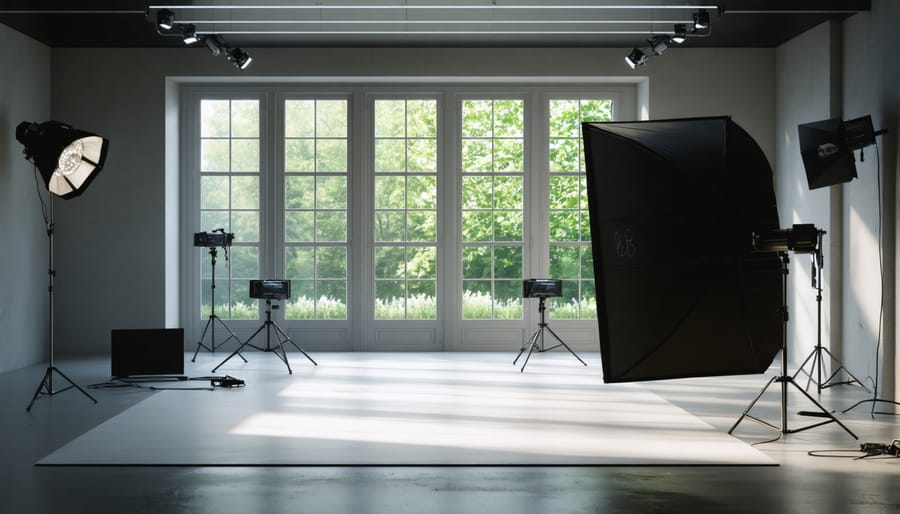
Responsible Equipment Management
Ethical Equipment Disposal
As photographers, we generate a significant amount of electronic waste through our equipment upgrades and replacements. Responsible disposal of cameras, lenses, batteries, and other electronic gear isn’t just good for the environment – it’s becoming increasingly important for maintaining a sustainable photography business.
Start by establishing a comprehensive recycling protocol for your studio. Batteries, in particular, require special handling – never throw them in regular trash bins. Most camera stores and electronics retailers offer battery recycling programs, and many will accept your used gear for proper disposal. Consider partnering with a certified e-waste recycler who can handle your electronic equipment disposal professionally.
For functioning but outdated equipment, consider donation programs that benefit photography students or charitable organizations. This approach not only keeps equipment out of landfills but also supports the photography community. Some manufacturers offer trade-in or buy-back programs, which ensure proper recycling while potentially offering credit toward new purchases.
Memory cards and storage devices deserve special attention due to data security concerns. Always securely wipe these devices before disposal and use specialized e-waste recycling services that guarantee proper data destruction. When upgrading studio computers or monitors, check with local technology recycling centers that can safely handle these larger items.
Remember to document your disposal practices – many clients appreciate working with environmentally conscious businesses, and proper waste management can become part of your studio’s sustainability story.

Second-Hand Market Participation
The second-hand market has become a cornerstone of sustainable photography business practices, offering both environmental and financial benefits. By participating in the used equipment market, photographers can significantly reduce their carbon footprint while maintaining professional-quality gear at more affordable prices.
Buying pre-owned cameras, lenses, and lighting equipment prevents these items from ending up in landfills and reduces the demand for new manufacturing. Many professional photographers have discovered that carefully maintained used gear performs just as well as new equipment, often at 30-50% below retail prices.
Selling your own unused or upgraded equipment keeps the cycle going and helps offset the cost of new purchases. Popular platforms like KEH, MPB, and local camera shops offer convenient ways to buy and sell used gear with warranty protection. This creates a circular economy within the photography industry, where equipment finds new homes and continues to create value.
When buying used equipment, focus on reputable sellers who provide detailed condition reports and testing results. Many professional studios maintain relationships with trusted second-hand dealers, ensuring they have reliable sources for both buying and selling equipment. This approach not only supports sustainability but also helps build a more resilient photography business model.
Remember to properly maintain and service your equipment to extend its lifespan and preserve its resale value. This mindful approach to gear management benefits both the environment and your bottom line.
Marketing Your Sustainable Practice
Client Education
Educating clients about your sustainable practices isn’t just good for the environment – it’s smart business. Today’s consumers are increasingly eco-conscious, and showcasing your green initiatives can be one of the most effective marketing strategies for photographers looking to stand out in a competitive market.
Start by creating dedicated sections on your website and social media platforms that highlight your sustainable practices. Share behind-the-scenes content showing your eco-friendly equipment, recycled packaging, or digital delivery methods. Consider creating an environmental mission statement that clearly communicates your commitment to sustainability.
Use your client meetings as opportunities to explain how your sustainable practices benefit both the environment and their final products. For instance, discuss how your energy-efficient lighting not only reduces carbon footprint but also creates beautiful, natural-looking images.
Include sustainability information in your welcome packets and pricing guides. Highlight features like digital galleries that eliminate the need for printed proofs, or explain how your eco-friendly album options maintain premium quality while being environmentally responsible.
Remember to emphasize the value proposition: clients aren’t just getting beautiful photos; they’re supporting a business that cares about environmental impact. Share specific examples of your sustainable initiatives and their positive effects, helping clients feel good about choosing your services.
Green Certifications
In the photography industry, several respected certifications validate a business’s commitment to sustainability. The Green Business Bureau (GBB) certification has become increasingly popular among studios, offering a comprehensive assessment of environmental practices and a clear roadmap for improvement. Studios can earn different levels of certification, from Member to Platinum, based on their implemented initiatives.
B Corp Certification, while more challenging to obtain, provides photographers with robust validation of their sustainable practices. This certification evaluates not just environmental impact but also social responsibility and business governance, making it particularly valuable for larger photography businesses with multiple operations.
Forest Stewardship Council (FSC) certification is essential for studios offering printed products, ensuring that all paper products come from responsibly managed forests. Similarly, the Sustainable Green Printing Partnership (SGP) certification applies to studios that handle their own printing operations.
Many photographers also pursue ISO 14001 certification, an internationally recognized standard for environmental management systems. This certification demonstrates a structured approach to managing environmental responsibilities and can be particularly impressive to corporate clients.
Local green business certifications, while varying by region, can provide studios with valuable recognition in their immediate market. These often come with networking opportunities and local marketing benefits that can help sustainable photography businesses connect with environmentally conscious clients.
The journey toward sustainable business practices in photography isn’t just about protecting our environment – it’s about creating a more resilient and profitable business model for the future. As we’ve explored throughout this article, implementing eco-friendly measures can significantly reduce operational costs while attracting environmentally conscious clients who value responsible business practices.
By adopting energy-efficient lighting, embracing digital workflows, choosing sustainable products, and minimizing waste, photography businesses can make a meaningful impact while maintaining their creative excellence. These practices not only help preserve our planet’s resources but also create opportunities for innovation and market differentiation.
The photography industry is uniquely positioned to influence environmental awareness through both our practices and our art. As visual storytellers, we have the power to showcase the beauty of our natural world and inspire others to protect it. By implementing sustainable practices in our studios and on location, we demonstrate leadership and responsibility that resonates with clients and colleagues alike.
Remember, sustainability is a journey rather than a destination. Start with small, manageable changes and gradually expand your environmental initiatives as you become more comfortable with new practices. The initial investment in sustainable equipment and processes often pays for itself through reduced operating costs and increased client appreciation. Together, we can create a more sustainable future for photography while building stronger, more profitable businesses.
